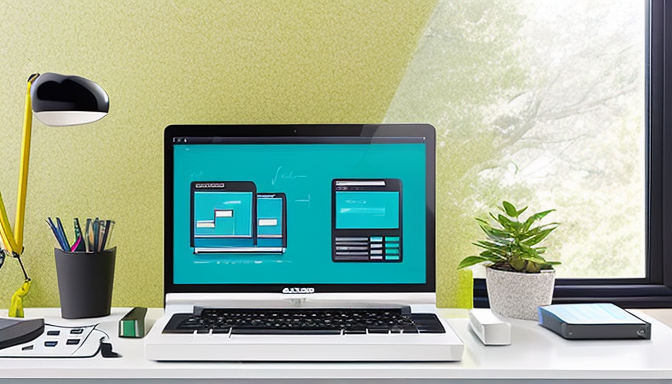In today’s digital landscape, creating visually appealing and user-friendly interfaces is more crucial than ever. With the right UX tools, designers can transform their ideas into stunning realities, ensuring that users not only enjoy their experience but also find it intuitive and engaging. Imagine having a toolbox filled with everything you need to build an effective design—this is what UX tools provide! They allow for seamless collaboration among team members, ensuring that every design element is crafted with the user’s needs in mind.
One of the best ways to streamline your design process is by utilizing UI kits. These kits come packed with ready-made components that can be easily customized to fit your project. Think of them as the building blocks of your interface; they save time and effort, allowing you to focus on creativity rather than starting from scratch. By using these pre-designed elements, you can maintain consistency across your designs and ensure that your interfaces are not only beautiful but also functional.
Moreover, the integration of prototyping tools enables designers to visualize their ideas and test them before final implementation. This iterative process is essential in refining the user experience, as it allows for adjustments based on real-time feedback. So, whether you’re working on a web application or a mobile app, embracing these UX tools will undoubtedly elevate your design game, making your interfaces not just stunning but also delightful to use.
Essential Design Tools
When it comes to crafting stunning interfaces, having the right design tools at your disposal can make all the difference. Imagine trying to build a house without a hammer or nails; it just wouldn’t work! Similarly, in the world of UX design, tools like UI kits and prototyping software are essential for streamlining your web and mobile design processes. These tools come packed with ready-made components that allow you to focus on creativity rather than getting bogged down by repetitive tasks.
One of the standout features of modern design tools is their ability to enhance collaboration among team members. For instance, platforms like Figma and Adobe XD not only offer extensive libraries of UI kits but also enable real-time collaboration, making it easy for designers and stakeholders to work together seamlessly. This is akin to a well-orchestrated symphony, where every musician plays their part in harmony, creating a beautiful end result.
Moreover, using these essential tools can significantly improve your workflow. They allow you to quickly prototype ideas and iterate based on feedback, ensuring that the final product is not just visually appealing but also user-friendly. With the right tools, you can transform your design process into a smooth ride, allowing you to focus on what truly matters—creating exceptional user experiences.

User Testing and Feedback Tools
When it comes to crafting the perfect user experience, are your best friends. Think of them as the compass guiding you through the intricate landscape of design. Without these tools, you might find yourself wandering aimlessly, creating beautiful interfaces that miss the mark on usability. But fear not! By incorporating these essential tools into your design process, you can ensure that your creations not only look stunning but also resonate with real users.
Imagine launching a new app or website only to discover that users are struggling to navigate it. That’s a nightmare scenario for any designer! This is where user testing comes into play. Tools like UsabilityHub and Lookback allow you to gather invaluable feedback directly from your target audience. By observing how users interact with your design, you can identify pain points and areas for improvement. This iterative process is crucial in refining your interface and enhancing overall user satisfaction.
Moreover, leveraging feedback tools like Hotjar and SurveyMonkey can help you gather insights through heatmaps and surveys. These tools provide a window into user behavior, revealing what captures attention and what gets ignored. With this knowledge, you can make informed decisions that elevate your designs. Remember, the goal is to create an experience that feels intuitive and engaging.
In summary, integrating user testing and feedback tools into your design workflow is not just a good practice; it’s essential for success. By putting users at the center of your design process, you can create interfaces that are not only visually appealing but also user-friendly. So, why wait? Start exploring these tools today and watch your designs transform!
Frequently Asked Questions
- What are the best UX design tools available?
There are several fantastic UX design tools out there! Some of the top choices include Sketch, Figma, and Adobe XD. Each of these tools offers unique features that cater to different aspects of the design process, making them essential for creating stunning interfaces.
- How do I choose the right tool for my project?
Choosing the right tool depends on your specific needs! Consider factors like collaboration features, ease of use, and the types of projects you typically work on. It’s often helpful to try a few different tools to see which one feels right for your workflow.
- Why is user testing important in UX design?
User testing is crucial because it provides real feedback from actual users. This feedback helps designers understand what works and what doesn’t, allowing for adjustments that enhance the overall user experience. Think of it as a reality check for your design!
- Can I use these tools for mobile app design?
Absolutely! Most of the popular UX design tools support mobile app design. They offer features like responsive design grids and prototyping for mobile interfaces, ensuring your app looks great on any device.